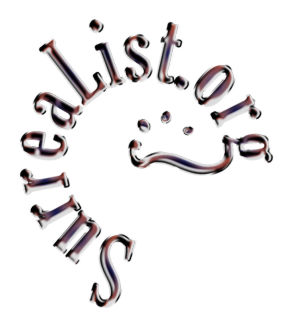
Hexagram One—Creativity
In Hexagram One, all the lines are yang. They represent the dragon, the Chinese symbol for spiritual power, wisdom, and strength.
In the first line the dragon is hidden. The message is to wait for the dragon, or creative energy, before beginning a creative endeavor.
In the second line the dragon appears in the field. This is the time for action, when the inspiration, or muse, is revealed.
In the third line we see a person who works long hours, ignoring the natural rhythms of work and rest. Although this is dangerous, their position is safe.
In the fourth line a person takes risks, just as a dragon may leap in the darkness of night. As long as the foundation is stable, this will work out okay.
In the fifth line, creative people interact and exchange ideas, just as dragons fly together in the sky. This brings progress and good results.
In the sixth line the dragons fly too high into the atmosphere. One must be sensitive to the stages of a project and get to work before the euphoria of the original idea fades.
A final note, or seventh line, says that one cannot force the dragon to appear, so it is wise to use the energy to the fullest when it is available. The image suggests a group of dragons merged into one, with no single head remaining.
Hexagram One Commentary
The introduction to Hexagram One states that it is the most solid and powerful of all the hexagrams, because it is composed of all solid lines, yang. It's an affirmation of the creative element, and personifies it as a being, the Chinese dragon. Creative inspiration comes from power, wisdom, and strength. Solid creativity is the big bang that creates everything that follows.
In the first line, creativity cannot begin, because the dragon has not yet appeared. Either the dragon is present or it is not. The dragon must appear of its own free will and cannot be forced. The line says to "wait for the dragon" before starting.
When the dragon appears in the field, indicated in line two, then the muse is revealed, and inspiration takes hold. The line says "this is the time for action."
Line three indicates the fever that can take over when one is possessed by the creative spirit of the dragon. Although it's not great to overwork, or binge work "ignoring the natural rhythms of work and rest," it's okay to do that if inspiration demands. It's dangerous to one's health and well being, but is not a sin. Overwork is something that just simply may happen when we are inspired to pursue creative goals.
Line four reveals another absurd behavior—intuitive risk. At times in a creative fever, we may say something or act outrageously, "just as a dragon my leap in the darkness of night." However, if the spontaneous words or actions are coming from a good place inside, a stable inner foundation, it will all work out. At times we may have blurted something out that could act as a catalyst to cause a change in someone's behavior or the course of events, and we may question ourselves why we did such a thing. This explains, our behavior was like a dragon taking a leap in the dark.
The fifth line explains the joy creative people take when they come together to visit and share ideas. When we think of creative people like dragons flying together in the sky, Paris of the 1920s comes to mind. In that era, Paris was a gathering place for American and European writers, artists, and musicians, including Ernest Hemmingway, Zelda and F. Scott Fitzgerald, T.S. Eliot, Gertrude Stein and Alice B. Toklas, Salvador Dali, Pablo Picasso, Man Ray, Henri Matisse, Cole Porder, and many more. Creative people flocked to Paris to mingle with other creative people and pick up each other's energy. Association among creative people is one of the rewards of dedicating oneself to creativity.
Line six warns of the most dangerous attitude for creative people. It says the dragons fly too high into the atmosphere. This refers to the ego, and how a big ego on a creative person is unhelpful. The line warns: "One must be sensitive to the stages of a project and get to work before the euphoria of the original idea fades." Spending too much time gratifying an inflated ego may pull a creative person away from the actual creative work, and inspiration may fade.
A couple of the hexagrams add a final line, or seventh line, as is the case in Hexagram One. The extra advice here is to use the creative energy to the fullest when it's there, because it's not always there. As lines one and two point out, creativity is only possible when the dragon appears in the field. The line suggests an image of "a group of dragons merged into one, with no single head remaining." This image is often carved on a jade ball, and symbolizes total immersion. There is "no single head" remaining, in other words, there are times when the creative person becomes one with the creative work, and feels moved to use the energy to its fullest.
To the reader: Most of the hexagrams have at least one line that predicts bad results, but that does NOT mean you are fated to that result. The hexagrams illustrate different attitudes, so study the actions and reactions to learn the attitudes that will lead to better outcomes.
The I Ching teaches you to flow with changes and create positive change from the inside through conscious living. Your future is in your hands. Consult the I Ching for ideas that lead to clear thinking and positive mental attitude. Reading the I Ching helps you take the time to reflect on your attitudes and ideas. Continue asking until you feel positive about your course.

Click here for another hexagram.
A note about this interpretation of the I Ching: Nori Muster wrote this version of the I Ching in 1994 and put it online at Surrealist.org in 2000. It is also available at Amazon:
e-book
paperback
